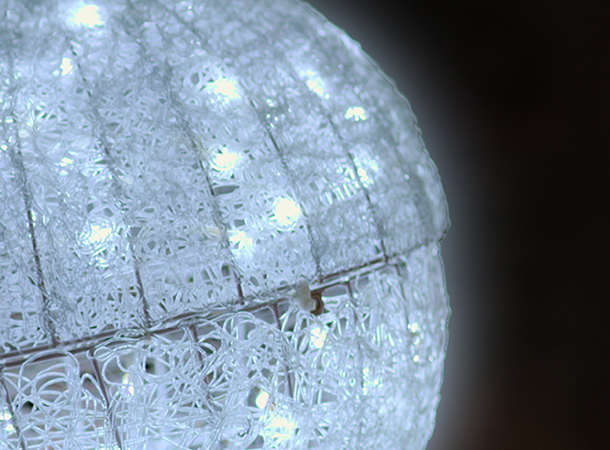Search the Community
Showing results for tags 'hdr grading monitor'.
-
The monitor achieves the 1000 cd/m2 (typical) high brightness level needed for HDR content display. It is also the world’s first LCD monitor to achieve a typical contrast ratio of 1,000,000:1 for displaying true blacks. The name “PROMINENCE” refers to the phenomenon known as a solar prominence – a flame-like eruption which extends from the Sun’s surface. This image of the bright sun shining against the deep black of space lends to the monitor’s ability to accurately display both bright and dark content. With "Local Dimming", the brightness of the backlight of LCD panels is selectively reduced in order to realize higher contrasts and lower black levels. Disadvantages of local dimming are atria that arise in dark areas of the image when they are adjacent to bright areas. The reason: The dimmable segments are comparatively large, which means that they can only be dimmed very large. Automatic Brightness Limiter ABL (Automatic Brightness Limiter) is a technique intended to protect OLED panels from excessive wear and damage. For this purpose, the brightness is limited to bright image areas beyond a certain luminance or area. This leads to an imprecise image representation. In addition, the white point of affected devices often changes. ColorEdge PROMINENCE CG3145 supports various video formats including HDMI input compatible with 10-bit 4:2:2 at 50/60p. The DisplayPort input supports up to 10-bit 4:4:4 at 50/60p. Cabinet Color Black Panel Type IPS Backlight Wide-Gamut LED Size 31.1" / 78.9 cm Native Resolution 4096 x 2160 (17:9 aspect ratio) Viewable Image Size (H x V) 698.0 x 368.1 mm Pixel Pitch 0.170 x 0.170 mm Pixel Density 149ppi Grayscale Tones DisplayPort, HDMI: 1,024 tones (a palette of 65 thousand tones) Display Colors DisplayPort, HDMI: 1.07 billion Viewing Angles (H / V, typical) 178°, 178° Brightness (typical) 1000 cd/m2 Contrast Ratio (typical) 1,000,000:1 Response Time (typical) 10 ms (Gray-to-gray) Wide Gamut Coverage (typical) DCI-P3: 99% Video Signals Input Terminals DisplayPort x 2 (with HDCP Ver.1.x 6), HDMI x 2 (HDCP, Deep Color) Digital Scanning Frequency (H / V) DisplayPort: 25 - 137 kHz, 23 - 61 Hz HDMI: 15 - 136 kHz, 23 - 61 Hz USB Function 1 port for monitor control 3-port USB hub Standard USB 3.0 Power Power Requirements AC 100 - 240 V, 50 / 60 Hz Maximum Power Consumption 472 W Typical Power Consumption 267 W Power Save Mode Less than 1.2 W Standby Mode Less than 0.7 W Built-in Calibration Sensor No Features & Functions Brightness Stabilization Yes Digital Uniformity Equalizer Yes Preset Modes Color Mode (REC2020, REC709, DCI, PQ_REC2100, PQ_REC709, PQ_DCI, HLG_REC2100, Calibration) OSD Languages English, German, French, Spanish, Italian, Swedish, Simplified Chinese, Traditional Chinese, Japanese Others Input Color Format, Input Range, HDMI settings (Noise Reduction, Film Detection), Signal Information, Color Adjustment (Brightness, Temperature, Gamma, PQ Clipping, HLG System Gamma, Color Gamut, Hue, Saturation, Gamut Clipping, XYZ Format, Gain, Black Level, Independent 6-Color Control, Reset), Picture Expansion(Full Screen, Aspect Ratio, Dot by Dot), Zoom, REC709 Gamut Warning, Luminance Warning, Co-View, Marker (Safe Area Marker, Safe Area Size, Aspect Marker, Aspect Settings, Border Color), Auto Input Detection, Menu Rotation, USB CHARGE Port, Power Save, Off Timer, Indicator, Input Skip, Mode Skip, Custom Key, Monitor Reset Physical Specifications Dimensions (Landscape, W x H x D) 757 x 487 - 603 x 323 mm Dimensions (Landscape with Hood, W x H x D) 778 x 497 - 613 x 453.8 mm Net Weight 29.2 kg / 64.4 lbs Net Weight (With Hood) 30.1 kg / 66.4 lbs Height Adjustment Range 116 mm Swivel 344° Environmental Requirements Operating Temperature 0 - 30 °C Operating Humidity (R.H., non condensing) 20 - 80 % Certifications & Standards (Please contact EIZO for the latest information.) CB, CE, TUV/GS, cTUVus, FCC-B, CAN ICES-3 (B), VCCI-B, TUV/Ergonomie, RCM, EAC, RoHS, WEEE, China RoHS, CCC, BSMI Dedicated Software Monitor Management Software ColorNavigator NX Supported Supplied Accessories (May vary by country. Please contact EIZO for details.) AC power cord, signal cables (DisplayPort - DisplayPort, Mini DisplayPort - DisplayPort, HDMI - HDMI), USB cable, user's manual - setup guide, adjustment certificate, ScreenCleaner, monitor hood, warranty card The Price : 24,000 EURO Available from February 2018 . .
- 8 replies
-
- hdr
- hdr grading monitor
-
(and 3 more)
Tagged with:






